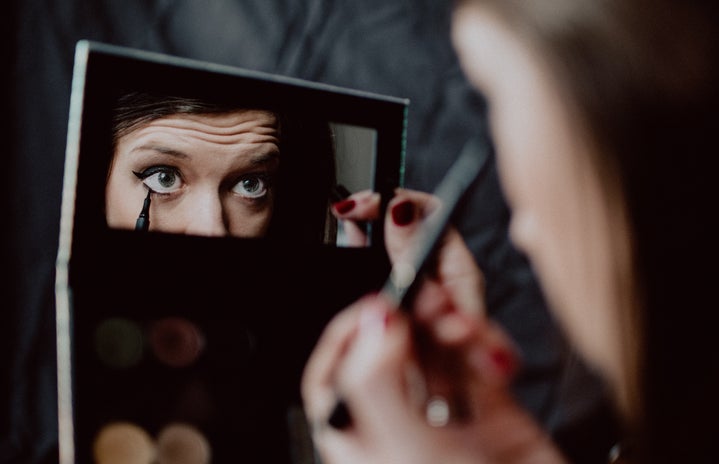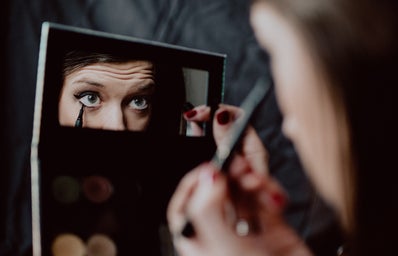Hello, readers of Her Campus, I’m very excited to be publishing my first article here as part of the Virginia Tech chapter.
In honor of March being Disability Awareness month, and having a prosthetic eye myself, I thought I’d spent some time letting you all know a little bit more about how they work. As TikTok has pushed more disabled creators into the spotlight, I’ve received more and more questions about just how that process works. The key to understanding is curiosity and I love to clear up misconceptions and share fun facts about what my world looks like, literally and figuratively, so here are the top five things I think you need to know.
- It’s Not Glass
-
While what often comes to mind when someone hears about fake eyes is probably something to do with a pirate’s eye popping out and rolling about the ship, either to comedic effect or onlooker terror, that’s far from the reality of today.
If an eye has become diseased or damaged and needs to be removed, something is needed to fill the space in the skull, and enter the orbital implant to the rescue. Modern orbital implants are made of hydroxyapatite or porous polyethylene, two long sciencey words for describing a plastic-like polymer that is safe inside the body. It is strong and doesn’t biodegrade. This is what the muscles of the eye socket are attached to. It is the typical hard, white sphere.
Bonus: some of the first eye prosthetics were made thousands of years ago, first from gold and then later from the more well-known glass.
- Some Assembly Required
-
A full prosthetic eye is actually TWO pieces, though a partial prosthetic is far more common than one might think. There is the orbital implant and then the scleral shell. It’s like a thick opaque contact that goes over the implant, or over an injured natural eye that has remained in the skull. The one that goes over a natural eye is much thinner, often only a few millimeters thick. This is the part that looks like an iris, This is what the outside world is seeing when someone is wearing a prosthetic. I have this kind, due to being born three months premature. So, because I was an underbaked queen, my left eye is blind and smaller than my right. My scleral shell fills out the rest of the socket.
Bonus: The scleral shell is often removed for sleep with those who still have a natural eye to prevent irritation, much like contact lens users.
- Locked AND LOaded
-
While the scleral shell is removable, the orbital implant is not. It stays in the skull for the rest of your life, unless there are rare extenuating circumstances such as damage or infection. The scleral shell slips out like a contact, or you can use a small suction cup. I call it an eye plunger. My favorite party trick is popping it out for a curious crowd, while it might be a little startling, especially for those expecting a whole eye, it doesn’t hurt and is very easy.
Bonus: Those poorly reviewed Wish contact removers actually work perfectly for this.
NETFLIX - Scrub-a-dub, Babey
-
While not quite as finicky as contact lenses, since my scleral shell is removable it needs to be cleaned, and applied/removed with freshly washed hands, unless I want to suffer a nasty bout of pink eye. You make that mistake ONCE as a teenager and once is enough. There’s no special cleaner required, just an unfragranced and gentle soap. I use baby soap for extra gentleness, and it is imperative I rinse it really well, no one wants soap in their eyes. If you’ve ever felt the fear of dropping your ring down the sink, dropping your expensive medical device is also a very scary possibility. The absolute first critical step is plugging the sink.
Bonus: I have a contact lens case I use for travel, but overnight I place it in an antique ceramic pill box I got while thrifting, it makes me feel very fancy. ~ Other temporary cases have included a mini Nutella jar and a prescription bottle.
- Painted by hand
-
Something that surprised me when I got my first prosthetic made was the fact that the stunningly realistic irises are hand painted. There is no picture-taking or 3d printing to be found when attempting to match a remaining eye. Ocularists are the professionals that do this work, they’re experts at mixing colors and gentle strokes, creating a depth of color that allows the piece to look natural in all types of lighting and settings. Due to the highly specified nature of this art, there tend to be few ocularists in any given region. Virginia only has one, mine was made in North Carolina.
Bonus: A shell can be made of any color, some people choose colors different from their own natural color, or colors that don’t occur in nature at all, to express their personality and tastes.
I hope you’ve enjoyed learning a little bit more about this aspect of disability this March, if you want to see more there are tons of videos on Youtube that show the creation process from start to finish.








